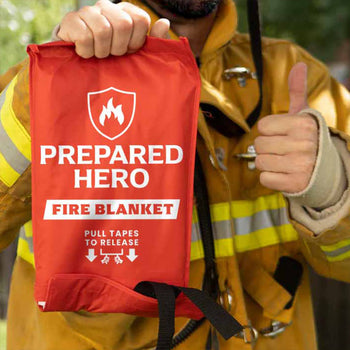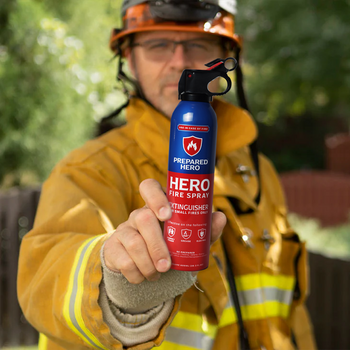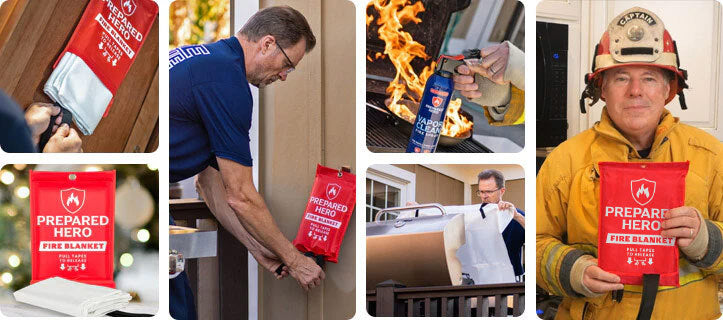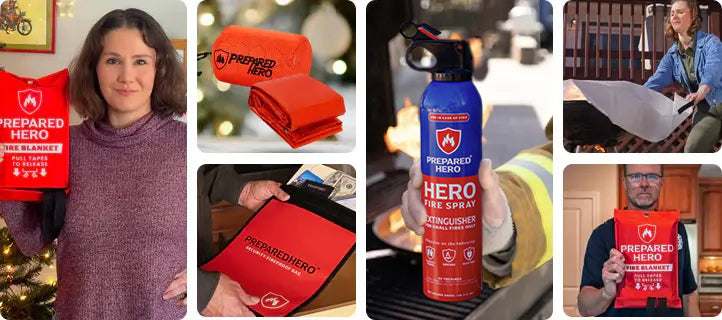Where you put your smoke detectors matters just as much as installing them. Proper placement makes sure they can detect...
Everyone needs to know what to do in case of a fire. Fire drills are the answer. They’re not just routine exercises; they help people evacuate quickly, stay calm, and spot any issues with the plan.
Whether at work, school, or home, practicing regularly makes sure no one is caught off guard. This guide breaks down everything you need to know about fire drills, including why they matter and how to run them.
What Is a Fire Drill?

A fire drill is a practice run that makes sure everyone knows how to evacuate in case of a fire. It usually involves setting off the building’s fire alarm and everyone passing through the nearest fire exit as if a real emergency were happening. In some cases, like in hospitals or high-rise buildings, evacuation means moving to a safer place inside the building instead of leaving it entirely. The goal is to do it quickly and spot any issues that need to be fixed.
Fire drills also help people get used to the sound of a fire alarm and how to react calmly when it goes off. Plus, buildings regularly check their fire alarm systems to make sure they work. They usually do these tests outside of busy hours to avoid disruptions.
Fire drills became more common after a tragic event in 1958. A fire at Our Lady of the Angels, a Catholic school in Chicago, killed 95 people. Most of them were children. They were trapped in classrooms and didn’t know how to get out. This disaster highlighted the need for regular fire drills so everyone knows what to do in a fire. In response, schools started conducting monthly fire drills. The fire also led to better awareness of fire safety, including understanding what causes them, the stages of fire, and how to fight them.
Since then, fire drills have become standard in buildings. They aim to help everyone evacuate safely and quickly in a fire emergency. They also highlight any issues with the building’s evacuation plans or fire alarm systems so they can be fixed before a real emergency occurs.
Why Are Fire Drills Important?

Fire drills keep everyone safe during a fire emergency. Whether at home or work, practicing what to do when a fire breaks out can save lives. Here’s why fire drills matter:
1. They Let Everyone Know What to Do
You may have talked about fire safety before, but practice sticks the most. Fire drills let everyone practice the evacuation plan. People can see where the exits are, how to move quickly, and how to stay calm in an emergency. Repetition helps make sure that everyone knows exactly what to do during an emergency without hesitating.
2. They Identify Potential Hazards
Fire drills aren't just about practicing an evacuation. They're also about spotting potential fire hazards. Maybe the fire alarm is not working, or an exit route is hard to navigate. These issues might not be dangerous on a regular day but become serious during a fire. Fire drills let you address them before they put everyone at risk.
3. They Build Trust and Teamwork
Practicing together builds trust. Everyone knows their role, and they trust others to do theirs. Evacuations become smoother because there’s less confusion or panic. Teamwork is also a must in an emergency, and fire drills help people coordinate with others. Participants can rely on each other to stay calm, do their part, and make the process efficient.
4. They Help Reduce the Risk of Injury
People who are not prepared might freeze or act impulsively, which can lead to injuries. Fire drills help prevent this by training people to stay calm and focused. They know what to expect, where to go, and how to respond in an emergency. This preparedness reduces the risk of injury and increases the chances of survival.
5. They Make Sure Safety Systems Are Working
Fire drills let you test your fire safety systems, including fire alarm panels, pull stations, sprinklers, and exits. You can check if the alarms are loud enough, if sprinklers are working, and if the exits are accessible.
6. They Promote Confidence
Knowing exactly what to do in an emergency makes people feel more confident. Fire drills help reduce anxiety by making everyone familiar with the process. When people are confident in their ability to respond, they’re more likely to stay calm and make clear decisions during a fire. This calmness prevents chaos and ensures everyone gets to safety quickly.
7. They Improve Evacuation and Fire Prevention
Fire drills give you the chance to test and improve your evacuation and fire prevention plans. You can see how long it takes for everyone to exit the building, if there are any bottlenecks, and if everyone is accounted for. You can also tweak your procedures to make evacuations faster after each drill.
8. They Make Fire Safety a Habit
Fire drills aren’t just one-time events. They also make fire safety a part of your routine. The more you practice, the more fire safety becomes second nature. This creates a culture of safety where everyone is aware of the risks and knows how to protect themselves. Regular practice makes sure people act quickly and correctly without thinking twice.
How to Conduct Fire Drills at Work

Fire drills aren’t just a box to check at work. They keep everyone safe in a real emergency. Here’s how to run a fire drill at work:
1. Make a Fire Safety and Evacuation Plan
You need a plan before conducting a fire drill. This plan should include how you’ll alert employees, where everyone should go once they leave the building, and who’s responsible for what. Here are key elements to include:
- How to report a fire or emergency
- Evacuation routes and exits
- Safe meeting points outside
- Roles for staff during a fire
- Procedures for people with disabilities
2. Educate Employees
Once the plan is set, it’s time to share it with everyone. Make sure all employees know the evacuation routes, where fire alarms are, and where the fire blankets, fire sprays, and fire extinguishers are. You can also keep flame shields so employees don’t get injured when escaping.
In addition, you must give out written plans or hold meetings where everyone can ask questions. It’s also important to mark fire exits clearly so everyone knows where to go during an emergency.
3. Run the Fire Drill
Now that everyone’s informed, it’s time to run the fire drill. Sound the fire alarm to alert everyone and ask them to evacuate the building. The goal is to see how quickly and calmly everyone leaves and heads to the safe meeting point.
Track how long it takes for everyone to evacuate and reach the assembly point. The faster everyone gets there, the better you’re doing. However, don’t be discouraged if it takes longer. Use this information to improve next time.
4. Motivate Employees to Participate
Some employees might not take the fire drill seriously. Get everyone on board by giving small rewards for successful drills. For example, if everyone evacuates quickly and safely, reward them with extra break time or let them leave early on Friday. This can encourage everyone to give their best effort.
5. Conduct Regular Fire Drills
Fire drills shouldn’t be one-time events. Regular practice helps everyone stay sharp. Hold fire drills often so people don’t forget the procedures.
You can also mix up the scenarios to keep things interesting. For example, simulate a blocked exit or a fire on a different floor to see how employees respond to unexpected challenges. This makes the drills feel real and helps everyone practice problem-solving.
How to Conduct Fire Drills at School

Fire drills are an important part of school safety. They help students and staff know exactly what to do in an emergency. Here’s how to run a fire drill at school:
1. Prep Staff and Students
All teachers and staff should know the school’s emergency procedures before a fire drill. Make sure everyone knows the evacuation routes, their roles, and how to communicate during the drill. Hold a meeting to review the emergency protocols, including how to use the PA (public address) system and relay information clearly.
You should also go over how to guide students calmly and efficiently. Make sure teachers know the quickest exits for their classrooms. Practicing the evacuation helps staff and students feel more prepared when the drill happens. Teachers should also remind students to stay quiet during the drill to make sure everyone hears the instructions.
2. Set Up Communication
Effective communication is key to a smooth evacuation. It’s important to have a plan in place for communicating between staff and administrators. Schools typically use PA systems or walkie-talkies. Clear, calm communication prevents confusion, especially if something goes wrong or unexpected situations happen.
3. Train for Fire Safety
Make sure that the staff and students know basic fire safety. These include knowing how to use a fire blanket, fire spray, and fire extinguisher (remember the acronym PASS). In addition, staff should know how to do the fire drill and understand their responsibilities during an evacuation. Training everyone helps keep things organized and prevents panic.
4. Run the Drill
Run the drill once the staff and students are trained and ready. Announce that a fire drill will take place so students know it’s only a drill and won’t panic. When the fire alarm sounds, staff should lead students to the nearest exit. Teachers must also do a headcount to make sure no one is left behind. Make sure the staff remains calm and guides students quickly but safely.
5. Debrief and Improve
Have a debriefing session after the fire drill. Doing this evaluates how well the drill went and what could be improved next time. See how long it took to evacuate the building and whether there were issues with the routes or instructions. Ask for feedback from staff and students to see if they were confused. Address problems, like crowded hallways or unclear communication, before the next drill. Remember, continuous evaluation and improvement make fire drills effective.
How to Conduct Fire Drills at Home

A home fire drill might not seem like a big deal, but it can save lives. Everyone in your household should know how to get out quickly and safely. Here’s how to run a fire drill at home:
1. Plan Your Escape Routes
Start by checking the layout of your home and figuring out the best ways to escape. Identify at least two ways out of every room, especially bedrooms or places where people might get trapped. If you live in a multi-story home, plan how you’ll exit from each level. Have a safe meeting place outside at least 30 feet from your home, where you can make sure no one’s missing.
2. Talk to Your Family
Sit down with your family and go over the escape plan before doing the drill. Make sure everyone, including kids, knows exactly where the exits are and where the meeting spot is. Talk about why fire drills are important and how to stay calm during an emergency.
Doing this helps everyone take it seriously. Remind them to leave everything behind and focus on getting out quickly and safely. Everyone shouldn’t stop for anything once the alarm goes off.
3. Test Your Smoke Alarms
Check if your smoke alarms are working. Test each one by pressing the test button. If any are low on battery or don’t make a sound, replace the batteries or get new alarms. Smoke alarms are your first line of defense, and they need to be loud enough to wake everyone up, especially at night. You don’t want to skip this step because your drill won’t be realistic if the alarm fails.
Find out why your smoke alarm randomly goes off at night and why your smoke detector beeps with a new battery here. You can also check why your smoke detector beeps and how to troubleshoot it here.
4. Start the Drill
Do the drill after the prep work. You can trigger the smoke alarm or shout “fire drill” to alert everyone. Once the drill starts, everyone should immediately evacuate the house using the planned routes. Don’t let anyone go back inside for anything. Everyone should go to the meeting spot outside, where you’ll do a headcount.
5. Debrief and Improve
After everyone is outside and accounted for, talk about how it went. Was anyone confused about the escape routes? Did everyone get out in a reasonable time? Discuss what went well and what can be improved.
Maybe the meeting point was hard to reach, or the exits weren’t as clear as you thought. Make changes if you notice any issues. Then, repeat the drill in a few weeks or months to keep everyone prepared and confident.
When to Do a Fire Drill

Fire drills should be done at least twice a year. However, the exact frequency depends on your fire risk and hazard assessment. For instance, you might need to run them more often if your building has higher fire risks. Regular drills make sure everyone knows what to do in an emergency. If you’re unsure how often to schedule them, check your fire safety guidelines or consult an expert. The key is to practice enough that the process feels familiar, but not so often do people stop taking it seriously.
What Do You Need for a Fire Drill?

You need the following for a fire drill:
- An evacuation plan
- A list of where all the emergency exits are located
- Where and how workers should exit a building during fire drills
- Where everyone should meet outside of the building
- What to do if a worker encounters a fire or smoke behind a door
You need a clear evacuation plan that outlines how everyone should exit safely. This includes a list of all emergency exits so workers know the quickest way out. Employees should know the proper evacuation procedures, including which routes to take and how to stay calm during the drill.
It’s also important to have a designated meeting spot outside where everyone can gather and be accounted for. Lastly, workers should know what to do if they encounter fire or smoke behind a door. These include checking for heat before opening it and using an alternate route if needed.
What Is In a Fire Drill?

A fire drill includes running through escape routes, finding exit doors, and heading to the designated meeting spot outside. The goal is to make sure everyone knows exactly what to do without panic. Having a fire drill helps people get familiar with the safest way out. Fire drills also help reinforce quick thinking, preparedness, and confidence so everyone can get out safely when a fire breaks out.
How Long Is a Fire Drill?

A fire drill usually takes about five to 15 minutes. However, the exact time depends on the size of the building and how quickly people evacuate. Drills in larger buildings with many employees or students take longer. The goal isn’t just speed—it’s making sure everyone follows the plan. You can look for areas for improvement if a drill takes longer than expected.
Conclusion
Fire drills make sure everyone knows what to do in a fire emergency. They also help identify issues and build confidence at work, school, or home. So, plan, practice, and improve to keep yourself and others safe.
Do you want reliable, easy-to-use, and affordable tools to put out fires before they spread? Check out Prepared Hero’s fire prevention tools here, and get up to 51% off on certain items. Stay prepared, hero!


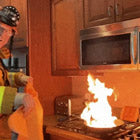 Fire
Fire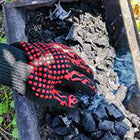 Safety
Safety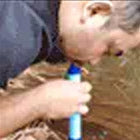 Survival
Survival Protection
Protection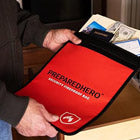 New
New
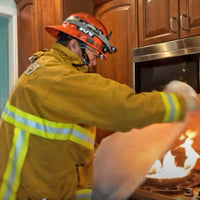 Fire
Fire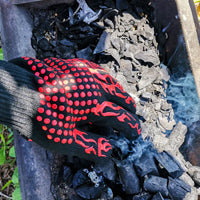 Safety
Safety Survival
Survival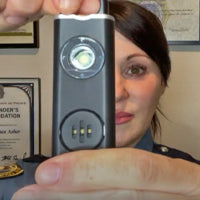 Protection
Protection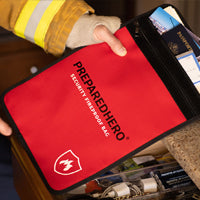 New
New
